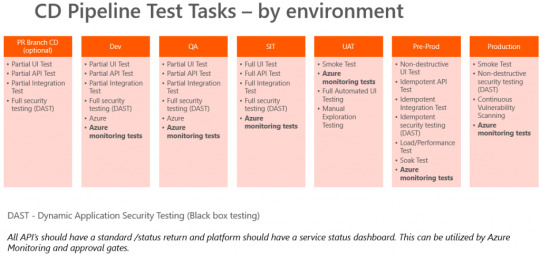#yaml
Text
Haha

65 notes
·
View notes
Text
Home Automation 家居自動化

View On WordPress
#BNO Visa#移民#ESP32#英國#Home Assistant#Home Automation#Microcontroller#MicroPython#MQTT#Python#Raspberry Pi#Raspberry Pi Pico Wireless#Thony#UK#YAML
2 notes
·
View notes
Text
8 notes
·
View notes
Video
youtube
Kubernetes Deployment Explained | Tech Arkit Deployment is a resource object used to manage the deployment and scaling of applications. It provides declarative updates to applications, ensuring that a specified number of pod replicas are running at any given time. Deployments are essential for managing the lifecycle of applications in a Kubernetes cluster, enabling features such as rolling updates, rollback to previous versions, and scaling.
0 notes
Text
Structuring YAML Pipelines and nested variables in Azure DevOps
When managing pipelines for large and complex repositories with multiple ‘Platforms’, each containing multiple apps and services, then the folder structure and variable strategy can be complicated. However, if this is done right, then the payoff for template reuse is dramatic.
Here, I outline my approach on the pipeline folder and YAML structure only. The variable structure allows for a full set…

View On WordPress
0 notes
Text
Build It! A Simple Maven Build on GitHub
Adding an automated Maven build on our Java101 project for every commit in main branch(es) and pull requests to those branch(es) can be very helpful for maintaining quality. #stepByStep #maven #cicd #GitHub
💚 TIP: References Quick List
GitHub: Signing Up for a New GitHub Account
GitHub: Authenticating in Your Browser
GitHub: Configuring your watch settings for an individual repository.
GitHub: Managing GitHub Actions Settings for a Repository
GitHub: Metadata Syntax for GitHub Actions (YAML)
Table of Contents
Table of ContentsOverviewPrerequisitesAdd A Maven Build Yaml FileTesting for Failure –…
View On WordPress
0 notes
Text
I find it so cute that they added pointers to YAML to prevent repeating the same thing over and over again.
0 notes
Text
2 notes
·
View notes
Photo

#Yaml #YML #Nginx #WebServer #Apache #IOT #IOTStack #SSH #DogeDope https://www.instagram.com/p/Ck2xLVOOA5M/?igshid=NGJjMDIxMWI=
0 notes
Photo

What is Ansible Reboot?
This module fundamentally is utilized for rebooting a machine, hanging tight for effective halting, and beginning then, at that point, reacting to test orders, to affirm reboot was fruitful. On Linux/Unix machines, it essentially summons closure order accessible under one of the ways/bin,/usr/bin,/usr/nearby/in.
How does Ansible Reboot work?
Given beneath are a rundown of every single accessible boundary and related adequate or default values.
test_command: This boundary is utilized to provide the order on rebooted has after reboot task.The default order is "whoami".
search_paths: This is to give the areas to look for closure orders on remote objective machines.
reboot_timeout:This time is like a flash and to determine an opportunity to trust that the machine will reboot and react to a test order.
reboot_timeout:This time is like a flash and to determine an opportunity to trust that the machine will reboot and react to a test order.
post_reboot_delay:This is time in seconds to pause, after reboot. Before endeavoring to approve the framework reboot.
connect_timeout:how much time in seconds to sit tight for fruitful association after reboot, before attempting once more.
msg:Default message is "Reboot Initiated by Ansible". This is to determine the message to show to working clients before rebooting.
Examples of Ansible Reboot
Here we have one Ansible regulator hub named as ansible-regulator. As target hubs, we have two remote machines. The first machine is a Red Hat Enterprise Linux machine named host-one and the second machine is a Ubuntu machine named host-two.
0 notes